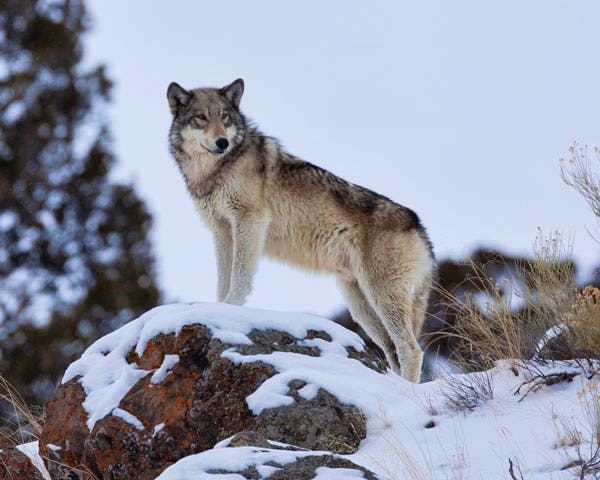— Op-Ed originally published in High Country News.
Nearly 20 years ago, I served on the team that carefully captured and released the first wolves in Idaho and Yellowstone National Park. Though this reintroduction effort was heralded internationally as a significant American achievement in the recovery of endangered species, we’re in a far different place today, and especially in Idaho.

The state has been working to undermine this conservation success story by proclaiming its intentions to kill most of its 659 wolves. Starting in 2011, when the federal government granted Idaho authority over wolves, breeding pairs began declining and are now down by 50 percent. Overall, since 2011, the state’s aggressive tactics have led to the deaths of 1,000 wolves.
Wolves, it turns out, are surprisingly easy to kill, though that should not come as a surprise. For decades, stockmen, bounty hunters and government trappers killed thousands of wolves using traps and poison. Today, wolves are chased down and killed from government helicopters by shooters using high-tech weapons, GPS and radio telemetry devices, and infrared scopes.
Since last December, Idaho state officials have authorized concealed aerial-gunning programs, paid contractors to attempt to kill entire wolf packs in designated wilderness areas, allowed competitive wolf-killing derbies to take place and liberalized hunting and trapping regulations. The state’s goal is to kill as many wolves as possible as fast as possible. As Brad Corkill, a commissioner for the Idaho Department of Fish and Game, said, “If every wolf in Idaho disappeared, I wouldn’t have a problem with it.”
And state officials are just getting started. Idaho Gov. “Butch” Otter’s recently established “Wolf Control Fund and State Board” is charged with killing hundreds more wolves, with funding coming from state taxpayers. Recently, the Idaho Department of Fish and Game adopted a new predation management plan that calls for killing up to 60 percent of the wolves living in the heart of the federally protected Frank Church Wilderness. This is the largest forested wilderness in the continental United States, named in honor of one of Idaho’s greatest political leaders, the late U.S. Sen. Frank Church. Wilderness is defined as a special place set aside for wildlife, and visitors are expected to leave no trace. Now, Idaho is going to fill this wild place with traps and snares to kill wolves in hopes of increasing the number of elk for the few hunters who go there.

What is truly destructive is that state officials seem bent on perpetuating a culture of fear and loathing toward wolves. They repeat gruesome tales from mythology and fail to tell the true, full story about successful ranching in the presence of wolves, or the many reasons why the elk population has declined. And counter to the media hype over wolf attacks, livestock losses to wolves have always ranked among the lowest causes of livestock loss in the West.
I know that not everyone in Idaho hates wolves. I grew up in Idaho, and I’ve found that most Idahoans don’t know many of the facts behind the wolf conflict. I also don’t believe that rural residents are fooled by the propaganda from campaigners against the wolf.
In central Idaho’s Sawtooth National Forest — a sheep superhighway that is also wolf territory — Blaine County ranchers, county, state and federal agencies, and local wolf advocates have been working together to resolve conflicts using non-lethal wolf management and livestock husbandry methods. These methods include deterrents like livestock guard dogs and electric fencing that dramatically reduce or eliminate livestock losses while also building social acceptance for wolves. The solid results are undeniable.
For the last six years, more than 100,000 sheep and lambs have grazed across this area amid wolf packs. Yet fewer than 30 sheep have been killed in the project area during that time, and no wolves have been killed by government agencies in the project area.
Nonlethal control methods are cheaper than killing wolves, and Blaine County has the lowest rate of livestock losses in the state. Why doesn’t the state of Idaho and Idaho USDA Wildlife Services save us all some money and goodwill and make peace with wolves when such reasonable alternatives are available?
After being persecuted for centuries, wolves deserve a better future in this country — and in Idaho in particular. We need to demand that the U.S. Fish and Wildlife Service initiate a status review of wolves in the region and examine how wolves have fared since being stripped of Endangered Species Act protection. Wolves in Idaho need our support to stay alive.
 – Suzanne Stone, Northern Rockies Representative
– Suzanne Stone, Northern Rockies Representative



